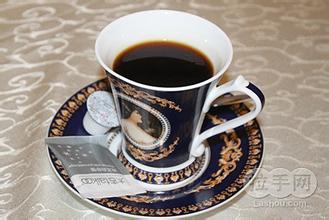Introduction to the method of describing the taste and flavor of Kenyan coffee beans
Introduction of coffee bean producing countries in Kenya
Located in the tropical monsoon area, most areas belong to the savanna climate, the coastal areas are hot and humid, and the plateau climate is mild. The rainy season is from March to June and from October to December, and the rest is dry season. The annual rainfall decreases from 1500 mm to 200mm from southwest to northeast. Nairobi, the capital, has a mild climate, with an average annual temperature of 17.7C and annual rainfall of 1049 mm. Kenya's mineral deposits are mainly soda ash, salt, fluorite, limestone, barite, gold, silver, copper, aluminum, zinc, niobium and thorium, except soda ash and fluorite. Most mineral deposits have not yet been developed. The main minerals are barite near Tamota in the southeast, niobium in the Mlima Mountains and gold from Kakamaga and Makajie in the southwest. Kyrgyzstan is one of the largest diatomite mines in the world. Lake Magadi is rich in natural alkali and salt. The Kenyan national emblem developed in 1963 centers on a shuttle-shaped shield emblem consistent with the national flag, with a golden lion on each side, a spear on one leg and a shield emblem on the other. The white rooster with an axe in the back is the emblem of the African National Union of Kenya. According to the local tradition, the rooster symbolizes the new life. The two lions embody national sovereignty and national dignity, as well as the ties between Kenya and Britain. Under the foot of the two lions is the second highest mountain in Africa, the Kenyan volcano.
The goal of cultivating SL28 was to mass produce coffee beans with high quality and resistance to diseases and insect pests. Although the output of SL28 was not as large as expected, the copper leaf color and broad bean-shaped beans have great sweetness, balance and complex flavor, as well as remarkable citrus and black plum characteristics. This important variety leads us to the unique Kenyan style: strong acidity, rich taste and beautiful balance. Kenya AA is one of them.
AA is a class name for the currency of raw coffee beans. The grade of raw coffee beans is generally AA,A,B,C, which mainly refers to the size of coffee beans. AA refers to coffee beans with larger particles, and coffee beans with particles of more than 17 mesh (17 mesh = 6.75MM).
SL28 is a delicious variety, suitable for growing in mid-and high-altitude areas where leaf rust is not serious. It can produce 1.8 tons of raw beans per hectare and drink the charming sour plum flavor to reflect the national treasure of Kenya.

Important Notice :
前街咖啡 FrontStreet Coffee has moved to new addredd:
FrontStreet Coffee Address: 315,Donghua East Road,GuangZhou
Tel:020 38364473
- Prev

Introduction of Coffee Bean Flavor description in Limon Manor of Nicaragua
Nicaraguan Coffee Manor Nicaragua Miyeri family has a history of more than 100 years since it began to grow coffee in 1908. Over the past 15 years, the family's investment in coffee equipment, processing technology, and personnel has led to the great growth of the family's micro-batch coffee beans, and at the same time, these changes also come from the efforts of the whole family and the unremitting input of each member. In rice
- Next

Description of Flavor of Coffee Manor in C ô te d'Ivoire; introduction to taste treatment of varieties in producing areas
The development of cocoa and coffee industry in C ô te d'Ivoire is basically divided into three stages: the first stage, from 1960 to 1990, was the stage of government monopoly, in which the government managed everything through the CSSPPA (CAISSE DE STABILISATION ET DE SOUTIEN DE PRIX DE PRODUCTION AGRICOLE), the national price stabilization fund for agricultural production, and the growers did not.
Related
- Detailed explanation of Jadeite planting Land in Panamanian Jadeite Manor introduction to the grading system of Jadeite competitive bidding, Red bid, Green bid and Rose Summer
- Story of Coffee planting in Brenka region of Costa Rica Stonehenge Manor anaerobic heavy honey treatment of flavor mouth
- What's on the barrel of Blue Mountain Coffee beans?
- Can American coffee also pull flowers? How to use hot American style to pull out a good-looking pattern?
- Can you make a cold extract with coffee beans? What is the right proportion for cold-extracted coffee formula?
- Indonesian PWN Gold Mandrine Coffee Origin Features Flavor How to Chong? Mandolin coffee is American.
- A brief introduction to the flavor characteristics of Brazilian yellow bourbon coffee beans
- What is the effect of different water quality on the flavor of cold-extracted coffee? What kind of water is best for brewing coffee?
- Why do you think of Rose Summer whenever you mention Panamanian coffee?
- Introduction to the characteristics of authentic blue mountain coffee bean producing areas? What is the CIB Coffee Authority in Jamaica?

